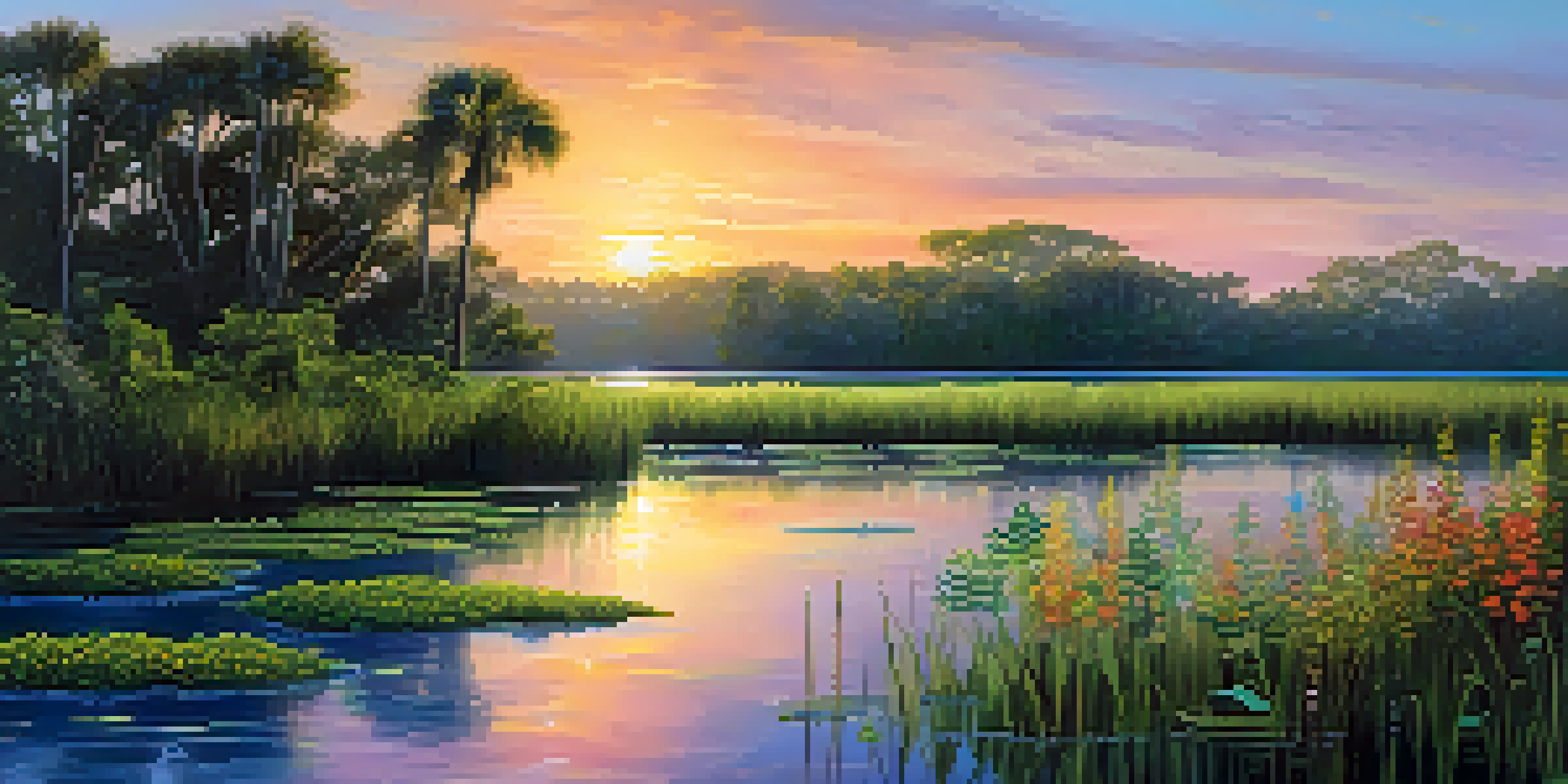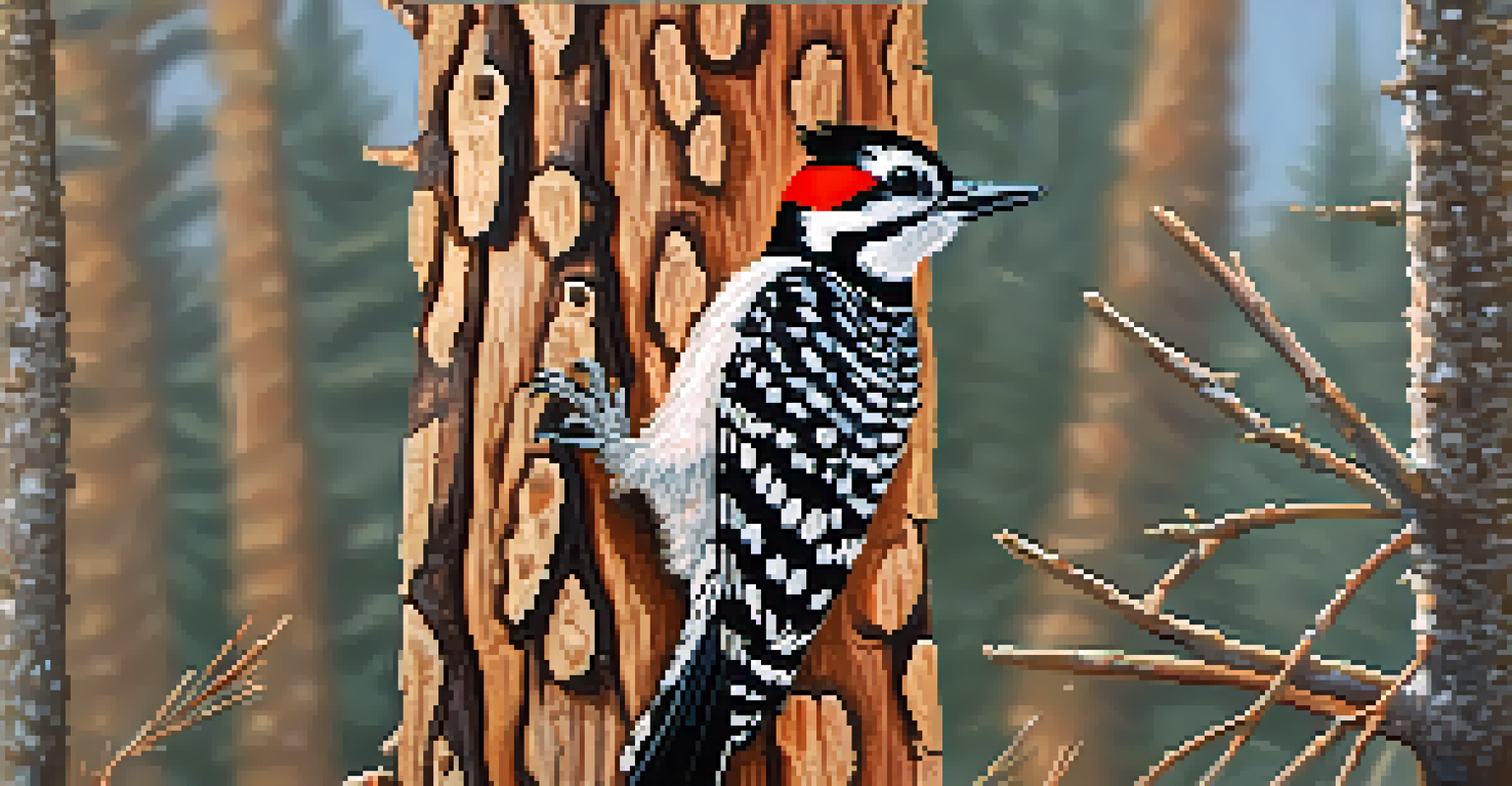Conservation Success Stories: Florida's Efforts to Restore Wildlife

The Importance of Wildlife Conservation in Florida
Wildlife conservation is crucial in Florida, a state known for its rich biodiversity. From the iconic Everglades to various coastal habitats, Florida is home to countless species, many of which are endangered. Protecting these species not only preserves our natural heritage but also supports the ecosystem's health, which in turn benefits all Floridians.
In nature, nothing exists alone.
The state's unique climate and geography make it a hotspot for diverse wildlife, but it also faces numerous threats, including habitat loss and climate change. This underscores the need for effective conservation strategies. By focusing on preserving and restoring habitats, Florida aims to ensure that future generations can enjoy this natural beauty.
As we dive into Florida's conservation success stories, it's important to recognize the collaborative efforts between government agencies, non-profits, and local communities. Together, they are working to create a sustainable future for Florida's wildlife.
Restoration of the Florida Manatee Population
The Florida manatee, a gentle giant of the state's waters, has seen a remarkable recovery thanks to dedicated conservation efforts. Once classified as endangered, the population has rebounded significantly due to habitat protection and stricter boating regulations. This success story highlights the impact of focused conservation measures.

Organizations like the Save the Manatee Club have played a pivotal role in raising awareness and funding for manatee protection. They provide educational resources and advocate for policies that ensure safe habitats for these beloved creatures. The partnership between local communities and conservationists is key to maintaining this progress.
Florida's Diverse Wildlife Needs Protection
Effective wildlife conservation strategies are essential to safeguard Florida's rich biodiversity and maintain the health of its ecosystems.
However, challenges remain, such as water pollution and the risk of boat strikes. Ongoing education and community involvement are essential to keep the momentum going and ensure the long-term survival of the manatee population in Florida.
Reviving the Red-Cockaded Woodpecker
The red-cockaded woodpecker, a small bird that thrives in the longleaf pine forests of Florida, has been another success story in conservation. Once on the brink of extinction, its population has steadily increased due to targeted habitat restoration and management efforts. This species serves as a crucial indicator of ecosystem health.
The future will be shaped by how we care for our environment today.
Conservationists have worked to restore longleaf pine habitats, which were historically abundant but have drastically diminished. By implementing controlled burns and promoting the growth of native plants, these efforts have created a suitable environment for the woodpecker to thrive. The collaboration between forestry professionals and wildlife experts has been instrumental in this process.
Education and awareness campaigns have also helped local communities understand the importance of these efforts. By fostering a sense of pride in the red-cockaded woodpecker and its habitat, Florida is ensuring that this species continues to flourish for years to come.
Protecting the Eastern Indigo Snake
The eastern indigo snake, the longest native snake in the United States, has been another focal point in Florida's wildlife restoration efforts. Once threatened by habitat loss and illegal collection, conservationists have implemented recovery strategies that focus on habitat protection and captive breeding programs. This multi-faceted approach has led to a resurgence in their population.
Efforts to restore the indigo snake's habitat include the preservation of gopher tortoise burrows, which serve as essential shelters for the snakes. By protecting these critical habitats, conservationists are not only helping the indigo snake but also supporting the wider ecosystem that relies on similar habitats.
Community Engagement Drives Success
Local involvement in conservation efforts, such as volunteer programs and educational outreach, is crucial for fostering a sense of stewardship and ensuring successful wildlife recovery.
Community engagement has been vital in these efforts, with educational programs helping to dispel myths about snakes and promote coexistence. By fostering a positive attitude towards these misunderstood creatures, Florida is paving the way for a brighter future for the eastern indigo snake.
Restoring Coastal Habitats for Sea Turtles
Florida's beaches are vital nesting grounds for several species of sea turtles, including the loggerhead and green turtles. Conservation efforts aimed at restoring these coastal habitats have seen significant success, thanks to initiatives like beach monitoring and nest protection programs. These programs have helped increase hatchling success rates, which is critical for the survival of these endangered species.
Collaborations between state agencies, non-profits, and local volunteers play a crucial role in these efforts. They work together to monitor nesting sites, protect eggs from predators, and educate the public about the importance of keeping beaches clean and safe for turtles. This collective action highlights the power of community involvement in wildlife conservation.
As a result, more sea turtles are returning to Florida’s shores to nest, creating a hopeful outlook for their populations. Continued efforts are essential to ensure that these beautiful creatures thrive in their natural habitats.
The Success of the Florida Panther Recovery Program
The Florida panther, a symbol of the state's wilderness, has been the focus of intensive recovery efforts. Once down to fewer than 30 individuals, collaborative conservation efforts have led to a population increase through habitat protection and genetic management. The result? A thriving population that now exceeds 200 panthers, showcasing the power of dedicated conservation work.
Key strategies in the recovery program include establishing wildlife corridors that connect fragmented habitats, allowing panthers to roam and breed safely. This approach not only helps panthers but also supports other wildlife species that share their habitat. The integration of science and community action has played a significant role in this success.
Future Challenges Require Innovation
Addressing ongoing threats like climate change and urban development will necessitate innovative solutions and collaborative efforts in wildlife conservation.
However, the journey isn't over. Continued education and outreach are necessary to foster understanding and support for panther conservation. By engaging local communities and raising awareness about the importance of these magnificent cats, Florida can ensure their future.
Community Involvement in Florida's Conservation Efforts
Community involvement is at the heart of Florida's wildlife conservation success stories. Local residents have played a crucial role in supporting initiatives, whether through volunteer programs, educational outreach, or simply spreading awareness. Engaging the community fosters a sense of stewardship towards the environment and local wildlife.
Programs that involve citizens, such as beach clean-ups and wildlife monitoring, empower individuals to make a positive impact. These activities not only benefit the environment but also enhance community bonds and create lasting memories. When people feel connected to their natural surroundings, they are more likely to advocate for conservation.

By showcasing real-life examples of successful collaborations, Florida can inspire other regions to prioritize community engagement in wildlife conservation. Together, we can create a brighter future for both wildlife and the communities that cherish them.
Looking Ahead: The Future of Wildlife Conservation in Florida
As we reflect on Florida's conservation success stories, it's essential to look ahead and consider the future of wildlife preservation in the state. Ongoing challenges like climate change and urban development require innovative solutions and a commitment to sustainable practices. This adaptability will be key in ensuring the health of Florida's ecosystems.
Continued investment in research and habitat restoration will be crucial in addressing these challenges. By leveraging technology and scientific advancements, conservationists can implement more effective strategies that resonate with the needs of both wildlife and communities. Collaboration among stakeholders will remain vital in this endeavor.
Ultimately, the future of wildlife conservation in Florida lies in a shared vision—one that values the intricate relationships between species and their habitats. With collective effort and passion, Florida can continue to be a beacon of hope for wildlife restoration, inspiring others to follow suit.